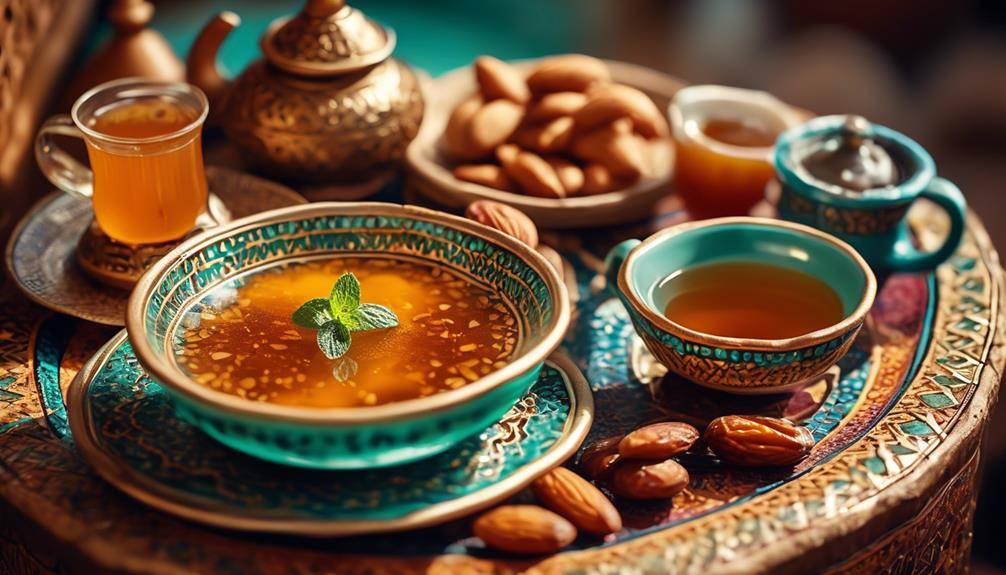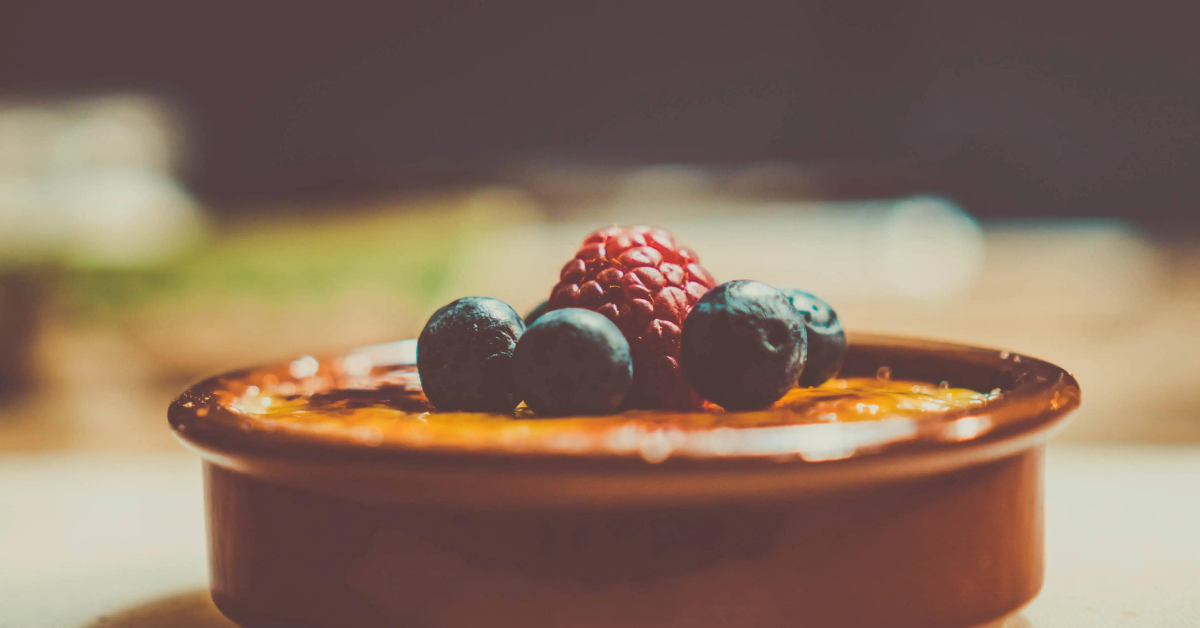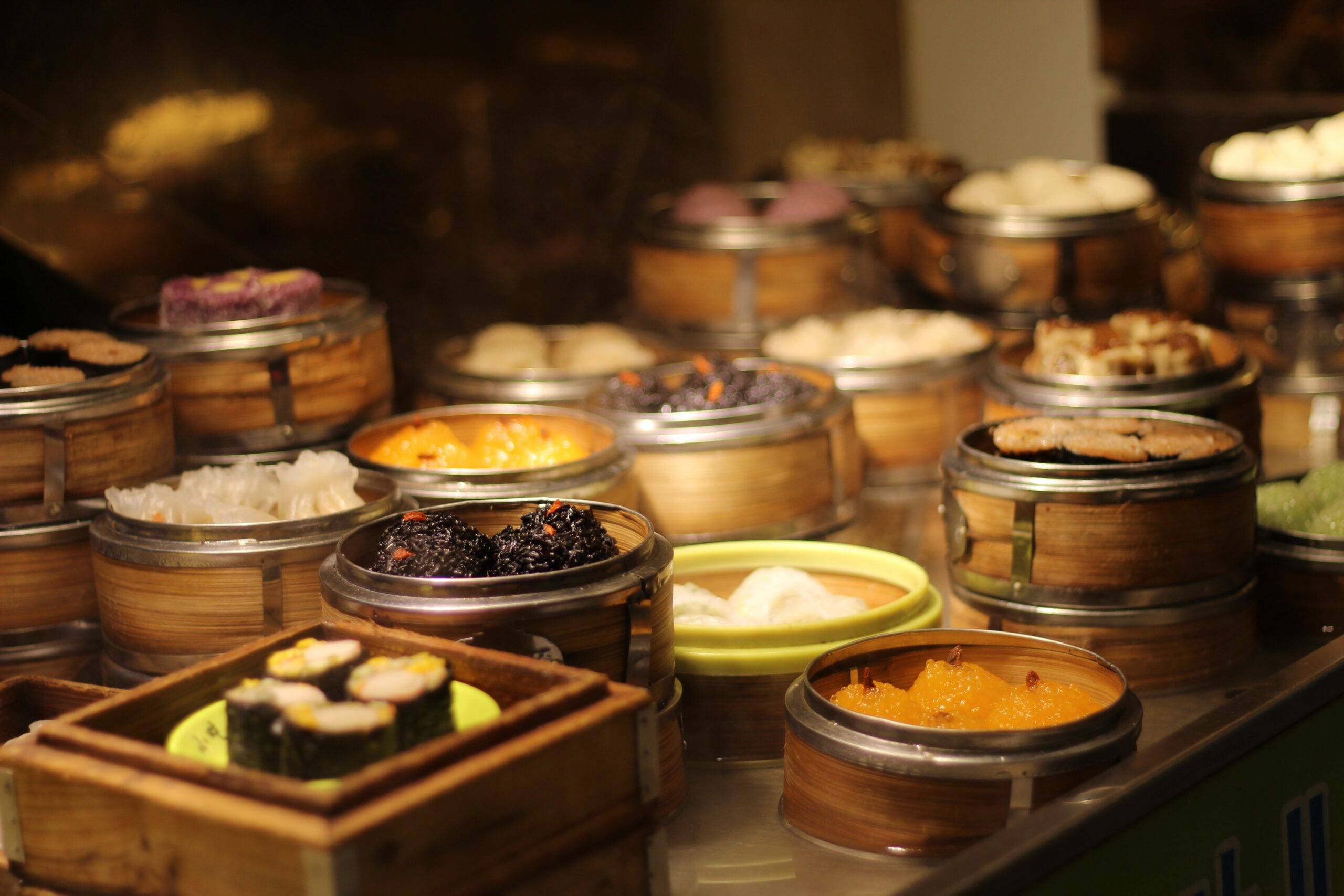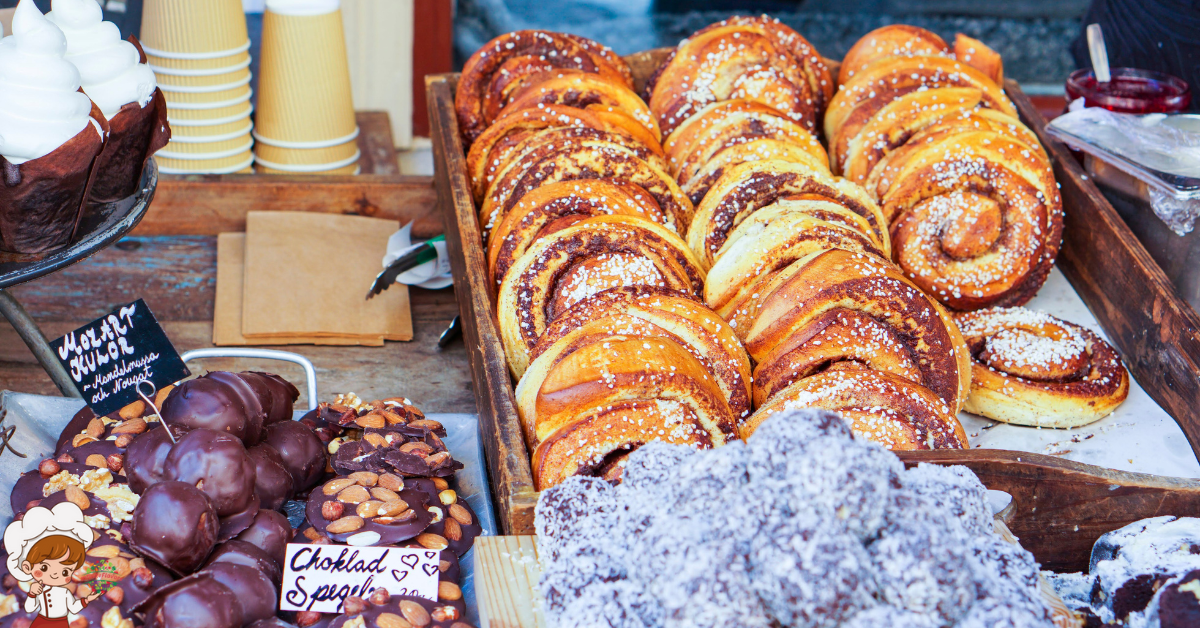Important Checklist For Thai Food Cooking Classes

Checklist For Thai Food Cooking Classes; Are you craving a culinary adventure that combines exotic flavors, fragrant spices, and a touch of Thai tradition? Look no further than Thai Food Cooking Classes. From mastering the art of Thai curry to perfecting the technique of stir-frying, these classes offer a unique opportunity to immerse yourself in the vibrant world of Thai cuisine. Discover the secrets behind authentic appetizers, street food, and desserts, and learn how to pair these delectable dishes with traditional beverages.
Whether you’re a novice in the kitchen or an experienced home cook, Thai Food Cooking Classes will ignite your taste buds and transport you to the bustling streets of Thailand. So, ready to embark on a culinary journey that will elevate your cooking skills to new heights?
Benefits of Taking Thai Food Cooking Classes
Taking Thai food cooking classes can be a rewarding and enriching experience that allows you to explore the vibrant flavors and techniques of this beloved cuisine. There are numerous benefits to be gained from participating in these classes, both in terms of culinary skills and personal growth.
First and foremost, Thai food cooking classes provide you with the opportunity to learn from expert chefs who have extensive knowledge and experience in Thai cuisine. They will guide you through the process of preparing traditional dishes, teaching you the essential techniques and ingredients used in Thai cooking. Through hands-on practice, you will develop a deep understanding of the flavors and spices that are characteristic of Thai cuisine.
Additionally, Thai food cooking classes offer a unique cultural experience. You will have the chance to immerse yourself in the rich heritage of Thai food and gain insights into the cultural significance of various ingredients and cooking methods. This exposure to Thai culture will not only enhance your appreciation for the cuisine but also broaden your understanding of different culinary traditions.
Moreover, taking Thai food cooking classes can inspire creativity in the kitchen. You will learn how to blend flavors and experiment with different ingredients, allowing you to create your own unique Thai-inspired dishes. The skills and knowledge gained from these classes will empower you to confidently prepare Thai meals at home, impressing friends and family with your culinary prowess.
Choosing the Right Thai Food Cooking Class for You
To find the perfect Thai food cooking class for you, consider your culinary goals and preferences. Thai cuisine is known for its bold flavors and unique ingredients, so it’s important to choose a cooking class that aligns with your interests and skill level. Here are some tips for finding the best Thai food cooking classes:
- Research different cooking schools and instructors: Look for reputable schools or instructors with experience in Thai cuisine. Read reviews and check their credentials to ensure they are qualified to teach Thai cooking.
- Determine your skill level: Some cooking classes cater to beginners, while others are more advanced. Consider your current cooking abilities and choose a class that will challenge you without being too overwhelming.
- Focus on your culinary interests: Thai cuisine encompasses a wide range of dishes, from spicy curries to refreshing salads. If you have a particular interest in a certain type of Thai dish, look for a cooking class that specializes in that area.
- Consider the format and duration of the class: Cooking classes can vary in length and format. Some classes are hands-on, while others are demonstration-style. Decide whether you prefer a shorter class or a more immersive experience.
Tips for getting the most out of Thai food cooking classes:
- Come prepared: Bring a notebook and pen to take notes during the class. This will help you remember the techniques and recipes you learn.
- Ask questions: Don’t be afraid to ask the instructor for clarification or additional information. They are there to help you learn and improve your cooking skills.
- Practice at home: After the class, make an effort to practice the recipes and techniques you learned. This will help reinforce what you learned in the class and improve your cooking abilities.
- Experiment with ingredients: Thai cuisine is all about bold flavors and experimentation. Don’t be afraid to try different ingredients or make substitutions to suit your taste preferences.
Essential Ingredients for Thai Cuisine
If you’re ready to embark on your Thai culinary journey, understanding the essential ingredients for Thai cuisine is key. Thai food dishes are known for their bold flavors and aromatic spices, which are derived from a unique blend of ingredients. Thai food culture places great emphasis on the balance of flavors, with dishes often incorporating the four main taste elements: sweet, sour, salty, and spicy. To achieve this balance, there are several essential ingredients that are commonly used in Thai cooking.
One of the most important ingredients in Thai cuisine is fish sauce, known as “nam pla” in Thai. This salty and pungent sauce is made from fermented fish and adds a distinct umami flavor to dishes. Another staple ingredient is Thai chili peppers, which provide the fiery heat that is characteristic of Thai cuisine. These peppers can be used to add a kick to curries, soups, and stir-fries.
Herbs and spices also play a crucial role in Thai cooking. Lemongrass, with its citrusy aroma, is often used in soups and curries to add a refreshing flavor. Thai basil, with its slightly sweet and peppery taste, is a common ingredient in stir-fries and noodle dishes. And of course, no Thai dish would be complete without the aromatic flavors of garlic, ginger, and shallots.
Coconut milk is another essential ingredient in Thai cuisine, adding richness and creaminess to curries and desserts. It is also used to balance the spiciness of certain dishes. Finally, the use of citrus fruits, such as lime and kaffir lime leaves, adds a tangy and zesty flavor to many Thai dishes.
Mastering the Art of Thai Curry
Are you ready to take your Thai curry game to the next level? Let’s talk about the key points that will help you master this flavorful dish. First, understanding the perfect curry spice combinations is essential to create an authentic taste. Next, achieving a creamy consistency is crucial, so you can enjoy a rich and velvety texture. Lastly, finding the right balance of flavors, from spicy to sweet, will elevate your curry to a harmonious symphony of tastes. Get ready to impress with your newfound curry skills!
Curry Spice Combinations
Discover the secret behind the mouthwatering flavors of Thai curry by mastering the art of combining aromatic spices. Thai curries are renowned for their rich and complex taste, achieved through the careful selection and combination of various spices. Here are four essential curry spice combinations that will take your dishes to the next level:
- Red Curry: Made with red chili, coriander, cumin, and garlic, this combination delivers a fiery kick and a robust flavor.
- Green Curry: Combining green chili, lemongrass, galangal, and kaffir lime leaves, this combination offers a fresh and citrusy taste with a hint of spiciness.
- Yellow Curry: With turmeric, cumin, coriander, and ginger as its base, this combination provides a mild and earthy flavor, perfect for those who prefer a less spicy option.
- Massaman Curry: This unique combination of cinnamon, cardamom, cloves, and star anise creates a fragrant and slightly sweet curry with a hint of warmth.
Perfecting Creamy Consistency
Mastering the art of Thai curry involves achieving the perfect creamy consistency that will elevate your dish to new levels of deliciousness. To achieve this, you can explore alternative methods that will help you troubleshoot common issues. One common issue is when your curry turns out too runny. To thicken it up, you can try adding a tablespoon of cornstarch mixed with water to create a slurry.
Stir it into the curry and let it simmer until it thickens to your desired consistency. On the other hand, if your curry is too thick, you can add a little more coconut milk or broth to thin it out. It’s all about finding the right balance and adjusting as needed. With practice, you’ll be able to achieve that perfect creamy consistency every time, making your Thai curry truly exceptional.
Balancing Flavors Harmoniously
Achieving the perfect balance of flavors is essential in mastering the art of Thai curry, taking your dish from ordinary to extraordinary. Thai cuisine is known for its harmonious blend of flavors that excites the palate. To create a well-balanced Thai curry, consider the following tips:
- Sweet and Spicy: Thai curries often combine sweet and spicy flavors. The sweetness can come from palm sugar or coconut milk, while the spiciness can be derived from chili peppers.
- Sour and Tangy: Adding a sour element, such as lime juice or tamarind paste, enhances the overall flavor profile of the curry. It provides a refreshing and tangy taste that complements the other ingredients.
- Umami Richness: Umami, the fifth taste, adds depth and richness to Thai curry. Ingredients like fish sauce, shrimp paste, or soy sauce can provide the umami flavor that balances the other flavors.
- Fresh Herbs and Aromatics: The use of fresh herbs like Thai basil, lemongrass, and kaffir lime leaves adds a burst of freshness and fragrance to the curry, enhancing the overall flavor experience.
Mastering the art of Thai curry requires understanding and balancing these flavor combinations. By carefully considering the interplay of sweet, spicy, sour, umami, and fresh elements, you can create a harmonious and delicious curry that tantalizes the taste buds.
Perfecting the Technique of Thai Stir-Frying
To perfect your stir-frying technique in Thai cooking, focus on mastering the balance of heat, timing, and ingredient preparation. Stir-frying is a fundamental cooking method in Thai cuisine, and by perfecting your skills, you can create delicious and authentic dishes bursting with flavor. The key to successful stir-frying lies in the mastery of wok techniques and the art of timing.
First, let’s talk about the wok. A wok is a versatile cooking vessel that allows for even heat distribution. To maximize its potential, ensure that your wok is properly seasoned and heated before starting. This will prevent your ingredients from sticking and create that desirable smoky flavor.
Next, ingredient preparation is crucial. You should have all your ingredients prepped and ready to go before you start cooking. Thai stir-fries are cooked at high heat, so there won’t be time to chop vegetables or measure sauces once the cooking process begins. Make sure everything is sliced, diced, and portioned out beforehand.
Now, let’s move on to heat and timing. Thai stir-fries are cooked quickly over high heat, requiring precise timing to achieve the perfect balance of crispness and tenderness. Start by adding oil to the hot wok and let it heat up until shimmering. Then, add your aromatics like garlic and ginger, followed by your protein and vegetables. Stir-fry them vigorously, ensuring they cook evenly and don’t become mushy.
As you stir-fry, keep in mind that certain ingredients require different cooking times. Delicate vegetables like bok choy or bean sprouts should be added towards the end, while heartier vegetables like carrots or bell peppers can go in earlier. This way, each ingredient retains its texture and flavor.
Exploring the Variety of Thai Noodles
Thai cuisine offers a diverse array of noodles, each with its own unique texture and flavor profile. Exploring noodle variations in Thai cuisine is a delightful adventure for food enthusiasts. Here are four popular Thai noodle dishes that you must try:
- Pad Thai: This iconic dish features rice noodles stir-fried with eggs, tofu, bean sprouts, and shrimp or chicken, all flavored with a tangy tamarind sauce. It is garnished with crushed peanuts and a squeeze of lime for a burst of freshness.
- Pad See Ew: Made with wide rice noodles, this dish is stir-fried with dark soy sauce, eggs, Chinese broccoli, and your choice of meat. The noodles absorb the rich flavors, resulting in a deliciously savory and slightly sweet dish.
- Drunken Noodles (Pad Kee Mao): Don’t let the name fool you; these spicy noodles are a true delight. Wide rice noodles are stir-fried with Thai basil, chili peppers, garlic, and your choice of meat. The bold flavors make this dish a favorite among spice lovers.
- Tom Yum Noodle Soup: This fragrant and spicy soup combines rice noodles with the flavors of lemongrass, lime leaves, galangal, and chili. Shrimp, chicken, or tofu are added, and the soup is topped with fresh herbs for a refreshing kick.
Creating Authentic Thai Appetizers and Street Food
Discover the vibrant flavors and enticing aromas of authentic Thai appetizers and street food. Thai street food is famous for its bold flavors, unique combinations, and mouthwatering aromas that will transport you to the bustling streets of Thailand. In Thai food cooking classes, you will have the opportunity to learn how to create these delicious and authentic Thai recipes right in your own kitchen.
Authentic Thai appetizers are a great way to start a meal, and they come in a wide variety of choices. From the popular Chicken Satay, which features tender marinated chicken skewers served with a peanut dipping sauce, to the refreshing and tangy Som Tam, a green papaya salad that is bursting with flavors, Thai appetizers are sure to excite your taste buds.
When it comes to Thai street food, there is an endless array of options to choose from. You can learn how to make the famous Pad Thai, a stir-fried noodle dish that is a staple of Thai street food. Or, you can try your hand at making delicious Thai spring rolls, filled with fresh vegetables, herbs, and your choice of protein. And let’s not forget about the flavorful Thai soups, such as Tom Yum Goong, a spicy and sour soup with shrimp, lemongrass, and chili.
In Thai food cooking classes, you will not only learn how to make these authentic Thai appetizers and street food, but you will also gain insight into the techniques, ingredients, and flavors that make Thai cuisine so unique. So, why not embark on a culinary adventure and learn how to create these mouthwatering dishes in the comfort of your own home?
Unlocking the Secrets of Thai Desserts
Indulge your sweet tooth and uncover the tantalizing secrets of Thai desserts. Thai cuisine is known for its vibrant flavors and unique ingredients, and their desserts are no exception. If you’re ready to explore the world of Thai sweets, here are a few things you need to know:
- Thai Dessert Recipes: Thai desserts encompass a wide range of flavors and textures. From the creamy and fragrant mango sticky rice to the refreshing and aromatic Thai iced tea, there’s something for everyone. Other popular Thai desserts include the vibrant and sweet Thai banana fritters, the delicate and chewy coconut pancakes, and the decadent and creamy coconut custard. Thai dessert recipes often feature a combination of fruits, coconut milk, sticky rice, and palm sugar, creating a harmonious balance of flavors.
- Unique Thai Dessert Ingredients: Thai desserts are made with ingredients that are not commonly found in Western sweets. Palm sugar, made from the sap of palm trees, adds a deep caramel-like flavor to many Thai desserts. Sticky rice, also known as glutinous rice, is a staple ingredient in Thai sweets and lends a chewy texture. Coconut milk is another essential component, providing a rich and creamy base for many Thai desserts. Other unique ingredients include pandan leaves, which add a fragrant and vibrant green color, and tapioca pearls, which are used in popular Thai desserts like tub tim krob.
- Techniques and Presentation: Thai desserts are not only delicious but also visually stunning. Thai chefs often use intricate techniques to create elaborate and beautiful dessert presentations. From shaping fruits into intricate designs to crafting delicate flower-shaped rice cakes, Thai dessert-making is an art form that delights the eyes as well as the taste buds.
- Cultural Significance: Thai desserts not only satisfy the sweet tooth but also hold cultural significance. Many Thai desserts are made to celebrate special occasions or festivals, such as Songkran (Thai New Year) or Loy Krathong (Festival of Lights). These desserts play a crucial role in traditional Thai ceremonies and symbolize good luck, prosperity, and the unity of the community.
Uncovering the secrets of Thai desserts is a journey that will tantalize your taste buds and introduce you to a whole new world of flavors and textures. So, gather your ingredients, follow the recipes, and prepare to be amazed by the delightful creations that Thai desserts have to offer.
Pairing Thai Dishes With Traditional Beverages
Ready to elevate your Thai dining experience? When it comes to pairing Thai dishes with traditional beverages, there are a few key tips to keep in mind. From the refreshing lemongrass-infused Thai iced tea to the aromatic jasmine-scented Thai iced coffee, exploring the world of traditional Thai drinks will take your meal to a whole new level of flavor.
Beverage Pairing Tips
When enjoying Thai dishes, it’s important to consider the traditional beverages that will perfectly complement the flavors and spices. Here are four beverage pairing tips to enhance your dining experience:
- Thai Iced Tea: This creamy and sweet beverage is a classic choice to balance the heat of spicy dishes. Its smoothness provides a refreshing contrast to the bold flavors.
- Fresh Coconut Water: For a lighter option, try pairing spicy Thai dishes with fresh coconut water. Its natural sweetness and hydrating properties help cool down the spiciness and cleanse the palate.
- Lime Soda: If you prefer non-alcoholic options, a lime soda is a great choice. The tangy lime flavor and fizziness cut through the richness of Thai dishes, leaving a zesty and refreshing taste.
- Herbal Infusions: Explore the world of Thai herbal infusions, such as lemongrass or pandan leaf tea. These aromatic and soothing beverages provide a unique flavor profile that complements the spices in Thai cuisine.
Traditional Thai Drink Options
To fully immerse yourself in the flavors of Thai cuisine, it is essential to explore the traditional Thai drink options that perfectly complement the vibrant dishes. One such option is traditional Thai tea, known as “Cha Yen.” This sweet and creamy beverage is made with black tea, condensed milk, and sugar, creating a rich and indulgent flavor that pairs well with spicy dishes.
Another popular choice is the refreshing Thai fruit juices, which offer a burst of tropical flavors. From the tangy and zesty taste of fresh-squeezed lime juice to the sweet and fragrant flavors of pineapple or mango juice, these beverages provide a cooling contrast to the spiciness of Thai cuisine. Whether you prefer a creamy tea or a fruity juice, these traditional Thai drink options are the perfect accompaniment to your Thai dining experience.
Tips for Bringing Thai Flavors Into Your Home Cooking
To bring the vibrant and aromatic flavors of Thai cuisine into your home cooking, incorporate key ingredients and techniques that will transport your taste buds to the streets of Thailand. Here are four tips to help you bring the essence of Thai street food into your own kitchen:
- Explore Thai Herbs and Spices: Thai cuisine is known for its bold and complex flavors, which are achieved through the use of aromatic herbs and spices. Stock your pantry with essentials like lemongrass, galangal, kaffir lime leaves, Thai basil, and cilantro. These ingredients will add depth and authenticity to your dishes.
- Master the Art of Thai Curry: Thai curries are a staple in Thai cuisine and are packed with rich flavors. Experiment with different curry pastes, such as red, green, and yellow, and learn how to balance the flavors of coconut milk, fish sauce, and palm sugar. By mastering the art of Thai curry, you can create a variety of delicious and aromatic dishes at home.
- Embrace the Sweet, Sour, Salty, and Spicy: Thai cuisine is all about achieving the perfect balance of flavors. Embrace the four key elements of Thai cooking: sweet, sour, salty, and spicy. Incorporate ingredients like palm sugar, lime juice, fish sauce, and Thai chilies to create harmonious and well-rounded dishes.
- Get Creative with Thai Street Food: Thai street food is known for its vibrant and exciting flavors. Experiment with popular street food dishes like Pad Thai, Tom Yum soup, and Green Papaya Salad. Don’t be afraid to add your own twist to these classics and make them your own.
Frequently Asked Questions: Checklist For Thai Food Cooking Classes
Are Thai Food Cooking Classes Suitable for Beginners or Do They Require Previous Cooking Experience?
Thai food cooking classes are suitable for beginners and don’t require previous cooking experience. They provide hands-on learning, step-by-step instructions, and expert guidance. You’ll learn essential techniques and gain confidence in preparing delicious Thai dishes.
Can I Bring My Own Ingredients to the Thai Food Cooking Class?
Yes, you can bring your own ingredients to the Thai food cooking class. This is especially helpful if you have dietary restrictions or allergies. It allows you to customize your dishes to suit your needs.
Will I Be Provided With a Recipe Book or Any Materials to Take Home After the Thai Food Cooking Class?
Yes, you will be provided with a recipe book and materials to take home after the Thai Food Cooking Classes. These resources will help you recreate the delicious dishes you learn to cook.
Are Thai Food Cooking Classes Suitable for People With Dietary Restrictions or Allergies?
If you have dietary restrictions or allergies, Thai food cooking classes can be suitable. The instructors are often accommodating and can provide alternatives or modifications to accommodate your needs.
How Long Does It Typically Take to Complete a Thai Food Cooking Class?
Typically, a Thai food cooking class takes a few hours to complete. The duration may vary depending on the class difficulty and the complexity of the recipes.
Conclusion
In conclusion, Thai food cooking classes offer numerous benefits, from learning essential techniques to discovering the secrets of authentic Thai flavors. By choosing the right class and mastering the art of Thai curry, stir-frying, appetizers, desserts, and beverage pairings, you can bring the vibrant and delicious taste of Thailand into your own home cooking. So why wait? Sign up for a Thai food cooking class today and embark on a culinary journey that will tantalize your taste buds.








